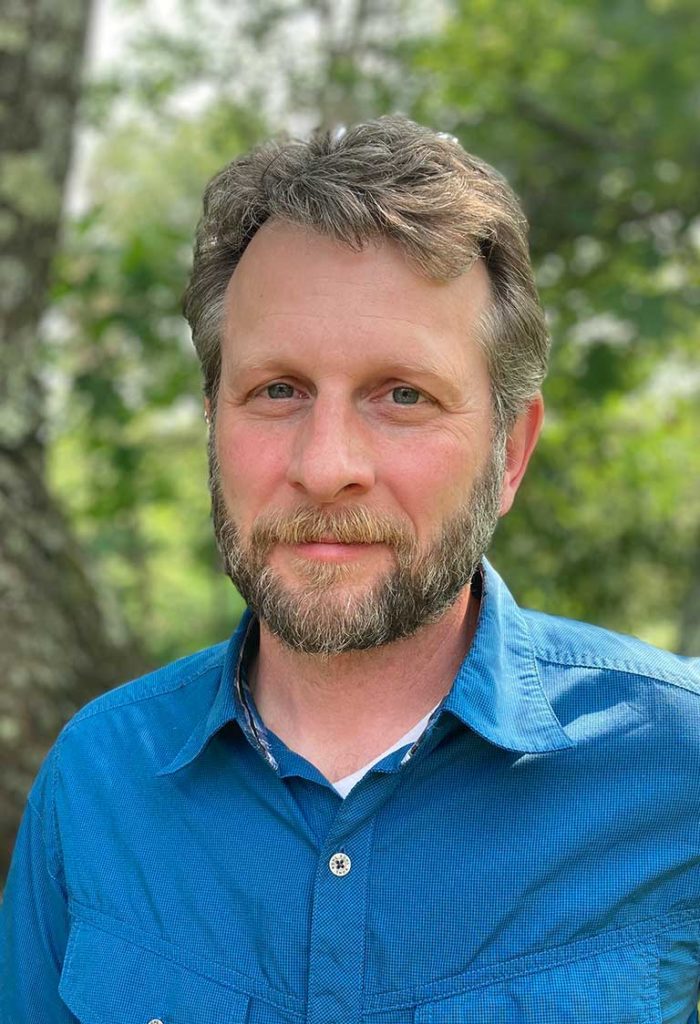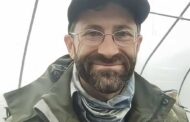
Todd Ontl: Helping forests adapt to climate change
Every month PelotonLabs co-founder Liz Trice interviews a local Peloton or community member. This month, Liz caught up with Todd Ontl, a Forester, Ecologist, and Climate Adaptation Specialist at the Northern Institute of Applied Climate Science (NIACS).

What does a forest ecologist climate adaptation specialist do?
We like to say we’re the “climate change help desk” for nearly anyone. That spans from national forests down to a woodlot in the town of Cumberland. My job is to help professional land managers understand climate change and manage our forests to become more resilient to changing conditions and how forests can sequester and store carbon. Also, I help them understand how climate changes will impact forests – as climate changes, how can we protect our forests?
Who do you work for, and how did you end up in Portland doing this?
Northern Institute of Applied Climate Science is a multi-institutional collaborative organization led by the US Forest Service that includes universities, industry, environmental, and tribal organizations. We have about twenty staff, some employed by the US Forest Service, and employees that are employed by academic institutions.
I’ve been coordinating climate action work in New England for six years and I have a PhD in Ecology and Masters in restoration ecology. My first four years at NIACS I was employed by the US Forest Service, but now I’m a research scientist employed by Michigan Technological University. I came to Portland from Indiana and Michigan because my wife recently started as the Distance Education Dean of Environmental Conservation and Research at Unity College.
What are the biggest threats that climate change poses to Maine’s forests?
In New England we have a lot of invasive species and pests. Emerald Ash Borer is hurting the Ash trees, and the Southern Pine beetle is creeping up the east coast. Bittersweet is an invasive vine that can strangle trees. Wooly Adelgid affects Hemlock trees.
Drought may also be a problem in the future. Models are showing that droughts are going to get more intense, more frequent, and of longer duration, and our trees aren’t adapted to that. It’s often not just one thing that kills a tree. Climate change is a threat multiplier… Drought can weaken the defenses of a tree, which makes it more susceptible to an insect, which can weaken the tree more. Then it might be more susceptible to a windstorm and get knocked down.
How will changes to forests caused by climate change affect people?
Forests really define the character of Maine. We’re the most forested state in the country – almost 90% of Maine is forested. Forestry is a huge economic driver in Maine, and without forests, Maine would be a much different place. Our lifestyles and lives would be very different if we lost those forests or if they looked really different. We’ll always have forests, but we may lose some iconic species and the ecology will change. The White Pine is fairly resilient, but we could lose Hemlock. We already have more pests like ticks. We could gain more sugar maple… not all change is bad.
Besides educating forest owners about dangers and changes, what can we do?
We can shape the change somewhat so that we still have forests we can enjoy and have economic benefit from them. That’s what adaptation is all about: What do we value, and how can we guide the change?
Right now, I’m teaching an eight-week course for forest owners and managers to develop an adaptation management plan for their forest that identifies the climate risks and what they can do. One landowner in Vermont owns a couple hundred acres of forest, and he’s interested in the potential of his forest to sequester carbon. He wants to create new forest from pastureland. So we’re helping him identify what tree species will do well into the future. Both ones that are already there, and what could be brought in from Massachusetts, one hundred miles to the south. When you bring species up from another location, that’s called assisted migration… There’s some skepticism about that since there’s been a bad history of invasives. But often we’re moving native species just a few counties to the north.
How about sequestration? How does that work?
Forests absorb carbon dioxide and store it – that’s called sequestration. A big part of my job is to focus on helping people manage their forest for improved carbon storage and climate mitigation. There’s been talk about “we should protect all our forest” and eliminate any cutting of land in the name of carbon storage. The science is really clear that the older a forest gets, the more carbon it stores. But older forests sequester additional carbon through tree growth slower than young forests, which suck up carbon really fast. An acre of young forest can sequester new carbon many times faster than an acre of old forest.
Eliminating harvesting of trees from forests isn’t going to solve the climate crisis. It’s more about finding the right balance of older and younger forests across the landscape and managing them better to improve their climate mitigation benefits, regardless of the age of the forest.
There’s a new movement to use mass timber to build large buildings out of wood structure. Now you can build up to eighteen stories with mass timber instead of steel. That is a fantastic way to put carbon into wood products that can benefit society. There is far less carbon emitted to the atmosphere by building with wood than with concrete or steel, both of which are fossil fuels intensive.
I love both old growth and mass timber. What’s the best strategy?
There’s a couple of professors at UMaine that developed the Triad Approach to forestry. There’s no one silver bullet. We need to set aside some forest and let them be old growth. Then a portion can be geared towards growing trees for harvest, called intensively managed forest – and much of Northern Maine is owned by timber companies and managed this way. In the middle is the matrix – land trusts, private lands, state-owned land, which can be managed with a light touch to be sustainable and provide a wide diversity of benefits: water, recreation, wildlife, and timber. You can still have large trees there that store lots of carbon, as well as produce timber products that support local economies.
Learn More:
Northern Institute of Applied Climate Science NIACS
Local Wood Works: Guide to Maine wood products.
https://www.localwoodworks.org
Forest Trees of Maine book: https://www.maine.gov/dacf/mfs/publications/handbooks_guides/forest_trees/index.html
Keep Maine Trees
https://mainetree.org/keeping-maines-forest
Forest Opportunity Roadmap
PelotonLabs is a coworking space in the West End of Portland, Maine with a mission to connect and encourage people working on their own to manifest their visions without fear.





